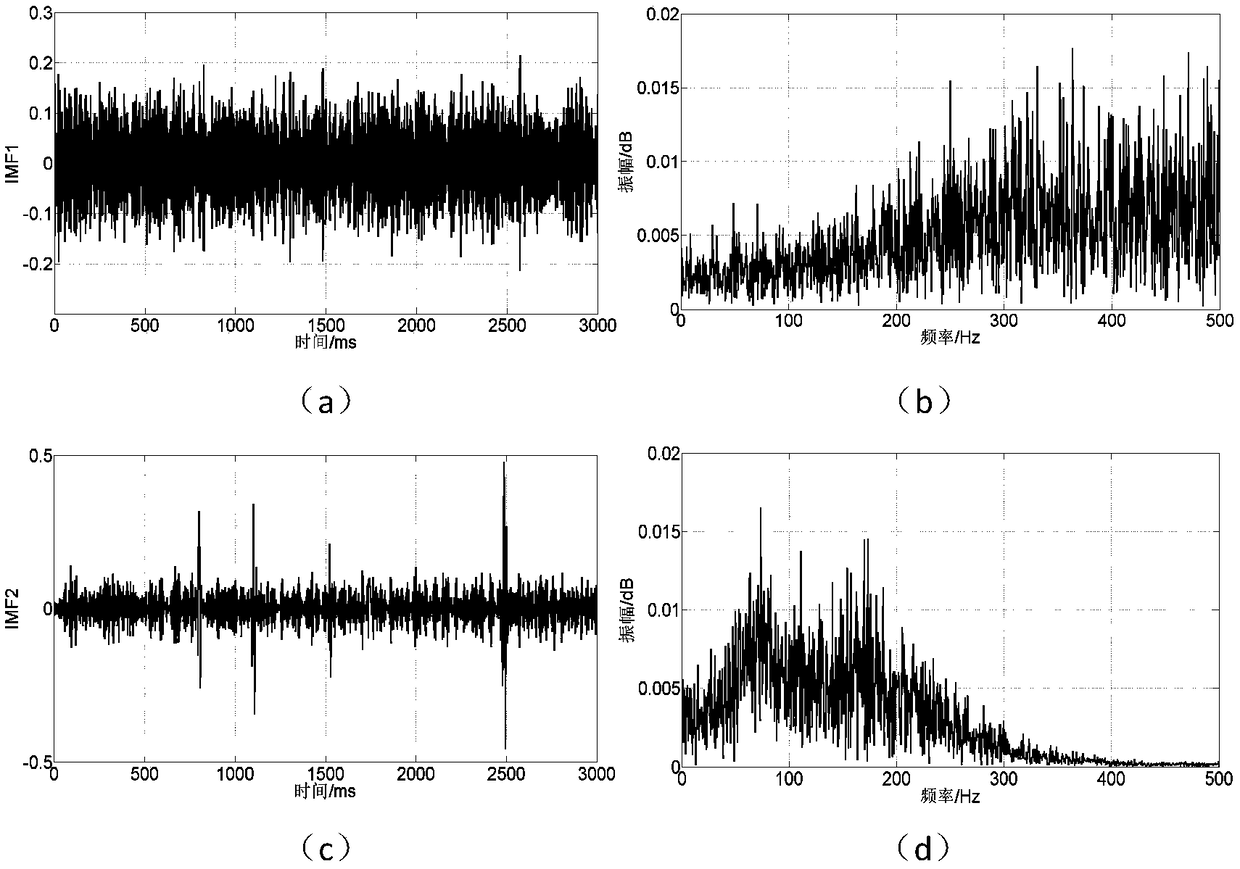Random noise suppression method for parallel epicentre seismic data based on PCA-EMD
A technology of random noise and seismic data, applied in seismology, seismic signal processing, geophysical measurement, etc., can solve problems such as damage to useful signal details, increase acquisition cost, low quality of seismic data, etc., and achieve good signal-to-noise ratio improvement ability. , the effect of reducing data processing costs and protecting signal details
- Summary
- Abstract
- Description
- Claims
- Application Information
AI Technical Summary
Problems solved by technology
Method used
Image
Examples
Embodiment Construction
[0037] Below in conjunction with accompanying drawing and embodiment the present invention is described in further detail:
[0038] In this embodiment, two seismic sources are used as a group for excitation, the recording time is 3 s, and the sampling rate is 1000 Hz.
[0039] A PCA-EMD-based method for suppressing random noise in parallel source seismic data, comprising the following steps:
[0040] a. Spectrum analysis is performed on the single-channel signal x(l) of the parallel seismic source data, and the spectrum range of the useful signal is estimated, where l is a sampling sequence, l=1,2,...,N, N is the maximum sampling point, and in this example, l= 1,2,...,3001, N=3001, useful signal spectrum range is 0~100Hz;
[0041] b. Carry out EMD decomposition on x(l) to obtain several modal components and remainder items, and perform EMD decomposition on x(l) by the following formula:
[0042]
[0043] of which IMF k is the kth modal component in the modal component, k...
PUM
 Login to View More
Login to View More Abstract
Description
Claims
Application Information
 Login to View More
Login to View More - R&D
- Intellectual Property
- Life Sciences
- Materials
- Tech Scout
- Unparalleled Data Quality
- Higher Quality Content
- 60% Fewer Hallucinations
Browse by: Latest US Patents, China's latest patents, Technical Efficacy Thesaurus, Application Domain, Technology Topic, Popular Technical Reports.
© 2025 PatSnap. All rights reserved.Legal|Privacy policy|Modern Slavery Act Transparency Statement|Sitemap|About US| Contact US: help@patsnap.com



